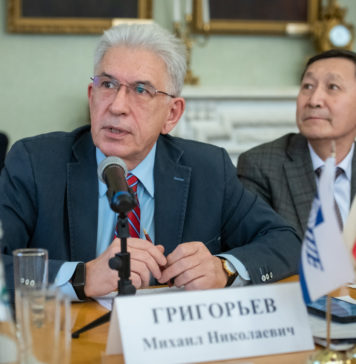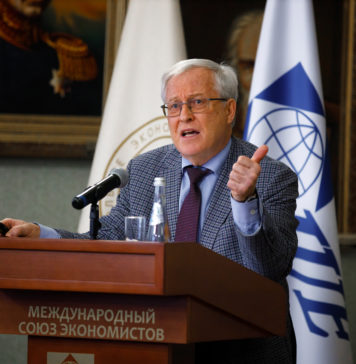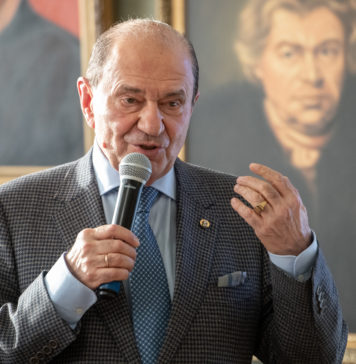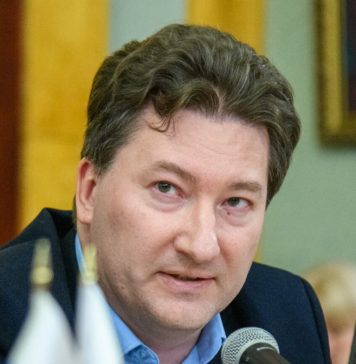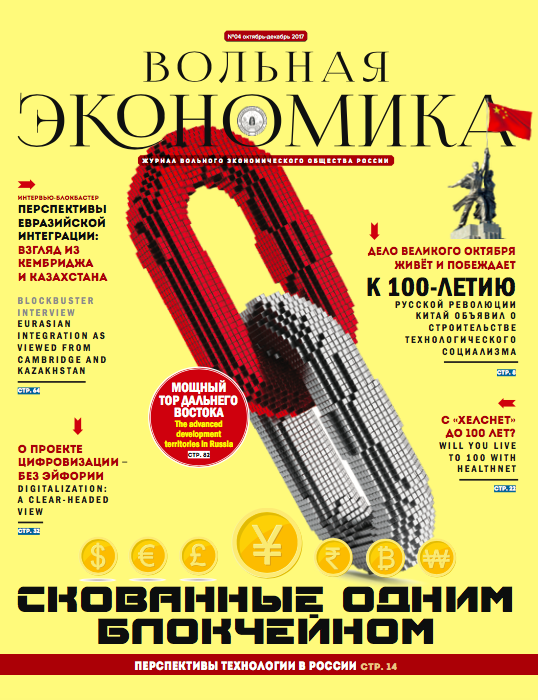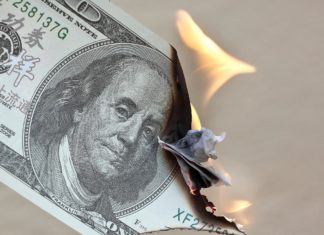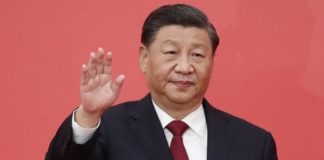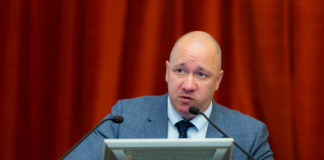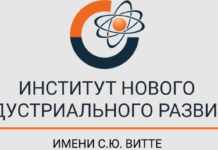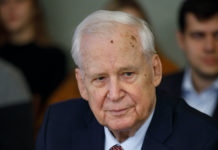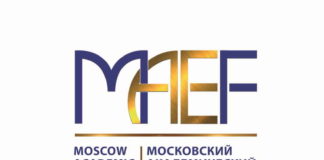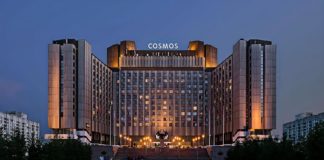Changes in China’s governance and the new world economic order.
In March 2018, the National People’s Congress made significant adjustments to the current Constitution of the PRC. From the political point of view, they consolidated and expanded the powers of Xi Jinping and the Communist Party. Xi, for the first time after Mao Zedong, has been officially called a “helmsman”, though not yet “great” as Mao. Economically, these changes have received a de jure confirmation which many experts consider to be a new world economic order created in China. Xi’s ideas are called “socialism with Chinese characteristics in a new era.” The economy has been revived, and now China is turning de jure into a world leader, which will require a long-term concentration of political power.
WHAT DOES THE CONSTITUTION REFORM MEAN?
Liberally inclined analysts believe that the changes in China’s Constitution suggest a departure from the liberal market principles, the rise of the Xi Jinping’s personality cult, similar to Mao’s, and the intent to strengthen the party’s grip on the market economy. In addition, Xi is said to be fearful for his own well-being. In particular, Vasily Kashin, Senior Researcher at the Higher School of Economics, noted in an interview to Vedomosti that Xi Jinping wants to remain Chairman of the PRC as “he’s not sure his successor will allow him to keep his informal levers of power and political legacy intact.” In addition, according to the expert, anti-corruption measures have become so massive under Xi that he is no longer certain the power can be safely transferred to the next generation of leaders.
In Russia, many experts consider the constitutional reform a good thing. By and large, these changes, in their opinion, merely formalize the deeper processes that have been ongoing in China. In particular, academician and presidential adviser Sergei Glazyev asserts that a new world economic order is being created in China: “A new world economic order is emerging before our eyes. It is exemplified by China, where strategic indicative planning is combined with market self-organization, where the economic authorities in the government are concerned not with growth according to planned targets or greater profits at any cost, but with improving public welfare on the basis of integration and combination of conflicting economic interests. Business activity is encouraged by the state, which through its financial system provides influx of cheap money, but only in those areas that give rise to social welfare. It is a convergent society, which Pitirim Sorokin mentioned in his writings years ago, predicting the emergence of an integral system. Such an integral system has appeared before our eyes.”
Thus, the strengthening of the PRC President’s role and the role of law, mass corruption fighting, and the establishment of a special Oversight Commission with powers at all levels and throughout China should serve the new order.
PERSONNEL POLICY
The authors of the article “China: Foreign Background of Constitutional Changes” (published on the Primakov World Economy and Foreign Relations Institute (IMEMO) website), Academician E.M.Mikheev and Sergey Lukonin, Candidate of Economic Sciences, believe that the constitutional changes have to a significant degree followed in the wake of Beijing’s global aspirations. In particular, the role of the Minister of Foreign Affairs has become more significant. “In order to solve the most sensitive economic and financial problems (debts of local governments and state enterprises, low efficiency of the public sector, financial stability in the context of continued financial openness and full currency liberalization, etc.) authoritative specialists with US education were invited to fill the important positions of the Chairman of China’s Central Bank (People’s Bank of China) and Xi’s Chief Economic Adviser,” the authors noted.
Mikheev and Lukonin also focus on the sweeping personnel changes which brought people personally loyal to Xi to the key positions, particularly those who showed determination during the anti-corruption campaign.
During the Asian Workshop at IMEMO Alexander Lomanov, a professor at the Russian Academy of Sciences, said it was evident there is a desire to preserve the balance among the traditional party factions (by keeping 2 persons from each faction) in the Standing Committee of the CPC Central Committee’s Politburo:
• so-called Komsomol members (who came to power through their work in the Komsomol — Li Keqiang and Wang Yang; according to Chinese analysts the powers of Prime Minister Li will be gradually dwindling);
• so-called “Shanghai people” (cadres formerly grouped around China’s ex-leader Jiang Zemin — Han Zheng (Vice Prime Minister) and Wang Huning (as of today, chief ideologist of the party);
• Xi’s own proteges (Zhao Leji (head of the Central Commission for Discipline Inspection) and Li Zhanshu).
| ECONOMIC BACKDROP TO CHINA’S REFORMS |
| GDP GROWTH IN 2017 — 6.9% (0.4% HIGHER THAN PLANNED)
TARGET GDP GROWTH IN 2018 — 6.5% CHINA’S GDP VOLUME EXCEEDED $12 TRILLION IN 2017 (ABOUT 15% OF THE WORLD’S GDP) CHINA’S CONTRIBUTION TO THE GROWTH OF THE WORLD ECONOMY: 30% MILITARY BUDGET INCREASED BY 8.1% TO $175 BILLION BUDGET DEFICIT IN 2018 — 2.6% OF GDP |
FOREIGN POLICY
The difficulties in China’s foreign policy are widely known and have been dubbed a trade war between the two largest economies of the world, the US and China, by the media. Trump explicitly called China a country that “challenges American interests, economy and values.”
In a recent editorial, The Economist predicts the American strategy. According to the publication, it is entirely natural for a continent-sized, rapidly growing economy with a culture of scientific inquiry to enjoy a technological renaissance. Already, China has one of the biggest clusters of AI scientists. It has over 800 million Internet users, more than any other country, which means more data on which to hone its new AI.
“ For the United States to seek to keep China down merely to preserve its place in the pecking order by, say, further balkanizing the Internet, is a recipe for a poorer, discordant—and possibly warlike—world…
In the case of China, [America] answers to an oppressive authoritarian regime that increasingly holds itself up as an alternative to liberal democracy—particularly in its part of Asia. China insists that it wants a win-win world. America has no choice but to see Chinese technology as a means to an unwelcome end,” the publication says.
The authors recall the reasons for America’s success in the 1950s and 1960s. Government programs, intended to surpass the Soviet Union in space and weapons systems, galvanized investment in education, research and engineering across a broad range of technologies. This ultimately gave rise to Silicon Valley, where it was infused by a spirit of free inquiry, vigorous competition and a healthy capitalist incentive to make money. It was supercharged by an immigration system that welcomed promising minds from every corner of the planet. “Sixty years after the Sputnik moment, America needs the same combination of public investment and private enterprise in pursuit of a national project,” The Economist says. Instead, the US chose to exert trade and military-political pressure: additional tariffs for Chinese exports, the concept of the Indo-Pacific region as opposed to the Chinese Maritime Silk Road strategy, cooperation with Vietnam, and contacts with Taiwan.
At the same time, even the US president expressed support for China’s decision to abolish presidential term limits.
WHAT ABOUT RUSSIA?
China, in the opinion of most experts and, in particular, IMEMO researchers, is looking for ways to quietly resolve trade contradictions with the US, and it cannot be said for sure whether a real trade war will ensue or the designed-in-the-US-manufactured-in-China system will be fully preserved. However, in the event of an aggravation it is obvious China will step up activity in those markets that are not yet sufficiently involved in trade with the country: Latin America, Africa and, of course, Russia.
Beijing, in particular, has made new proposals on trade and investment cooperation with the EU, including “coupling” the Silk Road strategy with the long-term economic programs of European countries.
As noted by Academician Mikheyev and scientific researcher Lukonin in their article, “against the backdrop of China’s foreign policy problems, Russia’s relations with Beijing are beginning to re-emerge in a new way… The aggravation of trade problems with the United States, ideological problems with Europe and military problems with India can in the short term propel China’s interest in Russia even further.”
A number of researchers believe that China is unlikely to pit a “comprehensive strategic partnership” with Russia against the pressure brought upon it by Western countries and, in part, India. However, scholars who support the “Big Eurasia” project consider such partnership a natural addition to the Silk Road strategy rather than a strategic alternative.
“We are confident that the Eurasian project is capable of uniting countries that together possess a high-tech industry, well-developed fundamental and applied science, highly qualified workforce, extensive transport infrastructure, modern telecommunications facilities, natural diversity, a multitude of mineral resources, established mass production, a robust financial system, a large domestic market with a potential for growth — and this is not a complete list. This potential is a good starting point for a technological breakthrough into a new future. But what kind of future will it be?”—says in his article Professor Sergey Bodrunov, President of the Free Economic Society of Russia, Director of the S.Yu. Witte Institute of the New Industrial Development.

